The most beautiful indoor flowers
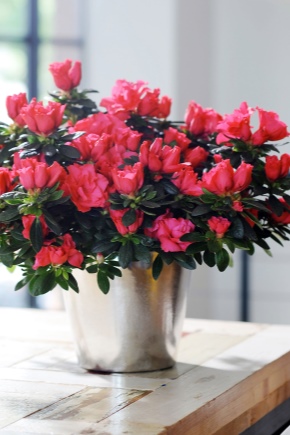
There are many ways to effectively decorate a home interior, but no solution can be compared with "living" decorations - indoor flowers. Many people choose beautiful plants for their homes, with which the environment takes on a particularly cozy, lively and hospitable look. In this article, we'll take a closer look at attractive indoor flowers.
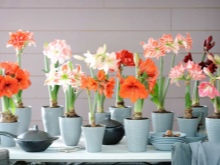
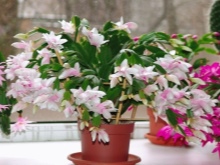
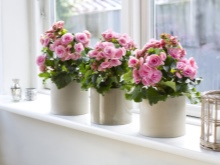
The most unpretentious
Most flower growers (both beginners and more experienced) try to look for unpretentious plants to decorate their homes. These green pets do not need complicated and expensive care. Let's get acquainted with some non-capricious indoor flowers and find out what distinctive features they have.
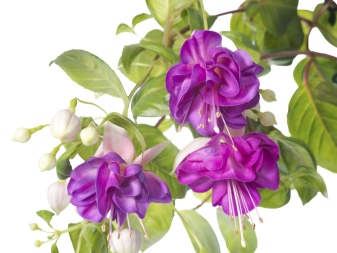

Geranium
A popular plant from the Geraniev family. Geranium originates from South Africa. This flower is famous for its unpretentiousness. He does not need complicated care. Geranium is grown very simply, so it can be safely placed in your house even by that florist who does not have much experience in such matters. A flower can become an unobtrusive but attractive interior decoration. With him, the atmosphere will certainly come to life.
Geranium differs in that it blooms almost all year round. The main thing that is required from the grower is to control the state of the plant's appearance. If withered inflorescences were noticed, they must be removed without fail. Young shoots need to be pinched in order to accelerate the growth of the culture. Pinching has a positive effect on geranium flowering.
If you do not forget about the systematic pruning of an indoor flower, it will always remain aesthetic and well-groomed.

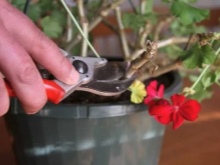
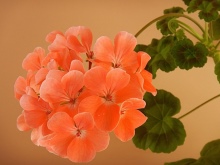
The indoor flower in question feels good under normal temperature conditions in the summer season. In winter, geraniums will be comfortable if the ambient temperature does not drop below 10 degrees. Proper watering of geraniums cannot be neglected. This wonderful, non-capricious plant needs abundant watering, but only after the upper earthen layer has dried. Geranium thrives in dry air. You do not need to spray the plant. Geranium can grow up to 30-40 cm. The flower grows well in sunny places and prefers good sod soil. Geranium propagation is required at the same time as pruning.
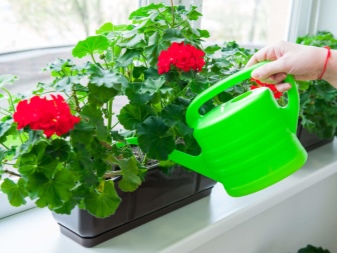
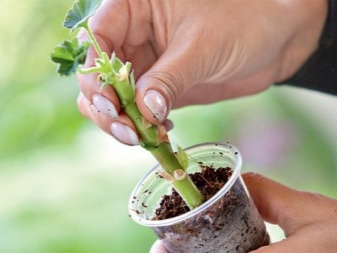
Anthurium
Anthurium comes from the largest Aroid family. The plant has a spectacular, eye-catching appearance. In certain interiors, these indoor flowers can easily take on the role of bright accents. Anthurium has leaf blades, the shape of which varies - it is heart-shaped, spatulate, rounded. There are also specimens with dissected leaves. The surface of the sheet plates is usually smooth and glossy or matte.
The main advantage of anthurium is its charming, bright flowers. They can have a variety of colors, for example, juicy red, snow white, purple. A rich "veil" seems to cover an inflorescence-ear, which can have the following forms:
- clavate;
- conical;
- spiral;
- spherical.
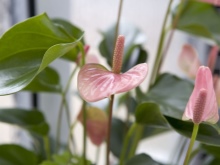

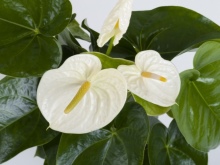
Usually the flowers themselves are located as close as possible to each other on the cob. Outwardly, they look more like small squares or rhombuses. Another distinguishing feature of the indoor flower in question is that different flowers exude different aromas. The plant can smell strong, pleasant, and even smelly.
Anthurium is able to bloom throughout the year, if you take care of sufficient lighting. Flowers can survive on the plant for a long time (up to one and a half months). In the course of pollination of flowers, it is possible to get ripe fruits - small berries of yellow or orange color with a couple of seeds.
Unfortunately, over time, anthuriums inevitably age, lose their original decorative effect... Their foliage becomes smaller, the trunk dries up. In such situations, one has to resort to the forced "rejuvenation" of the plant.
Anthuriums attract florists with their attractive decorative appearance. They can be used to decorate both ordinary homes and offices.
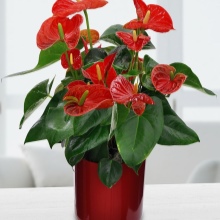
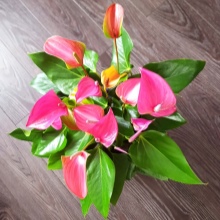
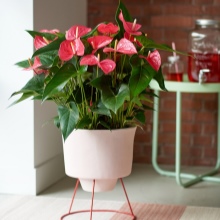
Saintpaulia
Otherwise, this delicate and cute plant is called the African violet. Such a charming indoor flower is long-growing, which attracts the attention of many flower growers. Saintpaulia comes from tropical Africa. The plant can bloom for 6-10 months a year, if you take care of its correct content. Diffused light and a temperature of 18 to 25 degrees are ideal for a flower.
The plant does well in humid air, but should not be sprayed. This is due to the fact that when water hits the leaf plates, characteristic brown spots may appear on their surface. The same defect also occurs when Saintpaulia is exposed to aggressive direct rays of the sun.
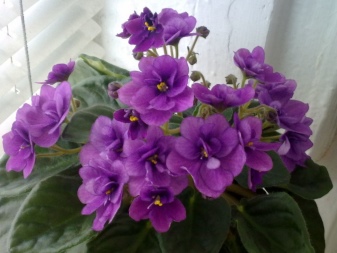
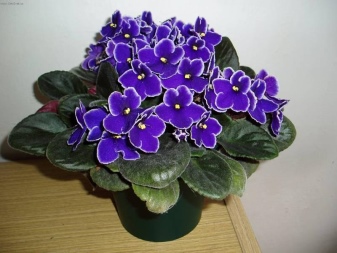
When growing an African violet, you need to remember about moderate watering. For this, you can use extremely warm and settled water.
Watering is one of the main secrets of effective growth of the crop in question. If you water the Saintpaulia correctly, it will grow beautiful and healthy, with good immunity.
With the onset of winter, it is important to ensure that the indoor flower in question does not "freeze". For this purpose, the temperature should be maintained between +18 and 20 degrees Celsius. We'll also have to take care of good lighting. Many people place a piece of Styrofoam on their windowsill, which can be an effective shield against the cold. In cultivation, this plant shows itself to be unpretentious, but certain difficulties may arise due to thin and vulnerable petioles and leaves. You need to handle such a flower as carefully and carefully as possible.
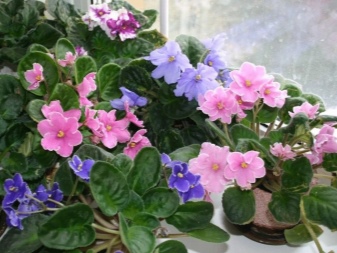
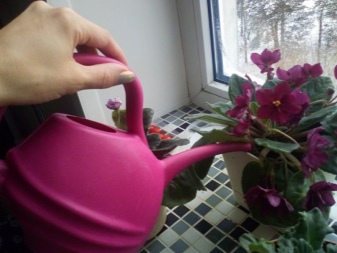
Decembrist
The Decembrist is a bush with branched stems, the average length of which is from 30 to 40 cm. Each stem consists of miniature segments resembling small leaves with projections at the edges. It must be borne in mind that the root system of this plant is its weak point. If you do not take care of favorable conditions, the roots can quickly begin to weaken, after which they risk dying altogether. If the plant is in an ideal environment for it, then the occurrence of unnecessary problems is minimized.
The Decembrists are distinguished by their airy roots. They are able to absorb moisture, literally taking it in from the air around them. This indoor beauty blooms with spectacular tubular flowers, collected in several tiers. The flowers themselves appear on the tops of the shoots from the segments. Each bud is endowed with a bundle of elongated, beautifully falling stamens. In natural conditions, the culture in question grows with flowers of snow-white or red color. Breeders have bred other varieties with more interesting raspberry, purple and yellow colors.
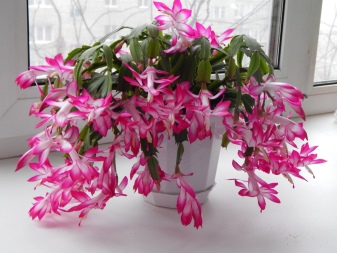
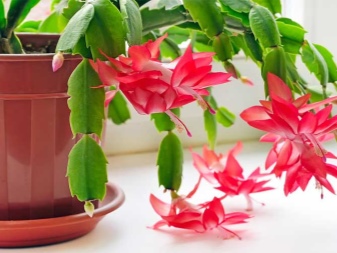
The Decembrist is an interesting looking plant that does not tolerate exposure to direct sunlight. Temperature surges and dry air can also negatively affect the health of these green pets. In winter, a blooming culture can be displayed on the southern windowsill, and in summer and spring, a handsome Decembrist will feel great being on the north or east side. In order for this interesting bush to grow evenly, from time to time it needs to be turned in the direction of the light in different directions. True, flowering plantings are neither rotated nor moved from their place.
If the weather is hot outside or radiators are working at home, the Decembrists need to be sprayed with water in a timely manner, and sometimes even bathed under a "shower". The soil in the pot must be covered with foil in advance. Around the flower, you can increase the level of humidity by placing pallets next to them with wet pebbles lying inside them. This flower does not have any special requirements for temperature values. It can grow easily at temperatures of +37 degrees and +2 degrees Celsius. However, these conditions can be extreme for the plant, so you should avoid them.
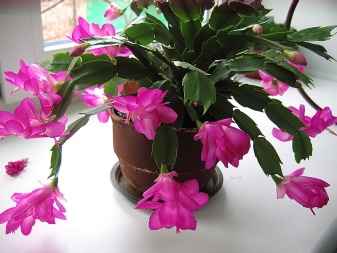
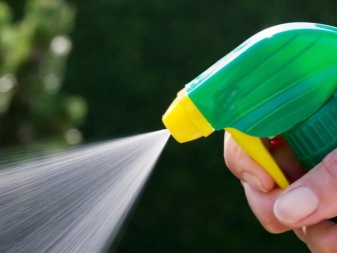
Crassula
Nice succulent plant, which is also called "fat woman". Under natural conditions, crassula of both herbaceous and watery types is found. You can also meet tree shrubs. Indoor succulents are both miniature and large. Plants that are at home are always more compact than their "congeners" growing in nature. First of all, in its size, Crassula is limited by the volume of soil mixture, the surrounding space. Over time, the fat woman will certainly turn into a tree with a small, but thick and dense trunk.
Crassula is distinguished by leaf plates, which are whole-edged and simple. Some species have interesting ciliate leaves. Lateral or terminal inflorescences may appear tassel-like or umbellate-paniculate. In their composition, you can find small flowers that have yellow, red, pale blue or snow-white color. However, it must be borne in mind that in indoor conditions the fat woman blooms extremely rarely. This culture is insanely popular, found in many homes.
Crassula is often chosen for further cultivation, because it does not require complex care, constant monitoring. This plant is hardy and strong, has strong immunity.

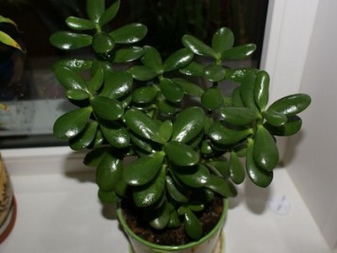
Rare plants rating
Many flower growers want to decorate their home not only with beautiful, but also exotic plants that are not so common. These green pets attract more attention and look especially interesting. Consider a small rating of the most original rare plants that can become a spectacular interior decoration.
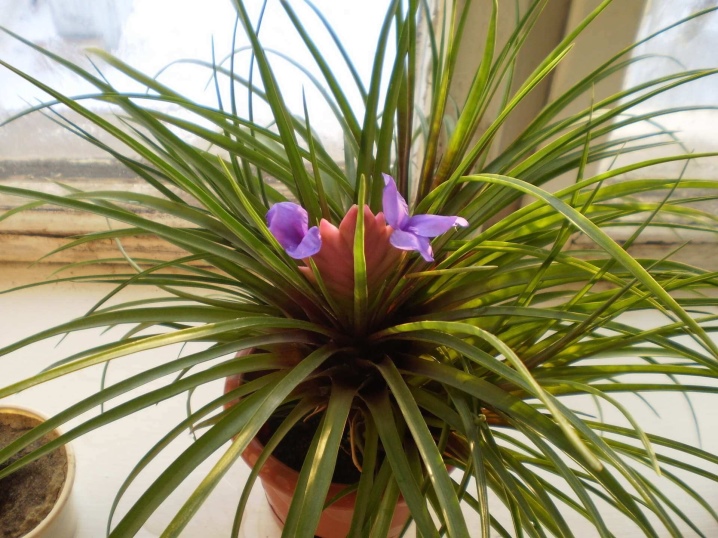
Euphorbia obese
Our rating opens with a very unusual euphorbia obese. At first glance, this plant may seem like one of the varieties of cactus. In fact, this is a completely different culture, belonging to the category of exotic. Euphorbia is distinguished by a non-standard stem, similar to a ribbed blue ball with rows of small thorns. The flowers can be pale pink or green. The latter are located in the form of a crown on the top of the milkweed.
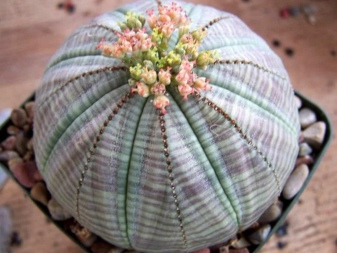

Decorative pepper
You can decorate your home environment not only using interesting flowers, but also beautifully growing bright vegetables. These include decorative peppers. He is very fond of diffused lighting, and it must be shaded from the direct rays of the sun, otherwise the culture may be covered with burns.
Decorative indoor peppers are a big lover of moisture, so they have to be watered abundantly from autumn to spring.


Pachypodium
Otherwise, it is called the Euphorbia Mila or the crown of thorns. The pachypodium looks interesting, being at the same time an unpretentious plant. Its flowers are white, pink, red. They grow on a thorny stem.
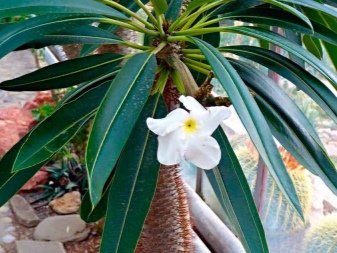
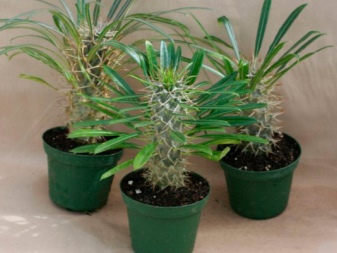
Stapelia variegated
A relatively new and rare culture with a very unusual appearance. The variegated stapelia is distinguished by large flowers that have a purple-golden or purple-gray color. Corollas are flattened and held on long cuttings.
In order to attract different pollinators, the staple emits an alluring meaty aroma that can seem completely unpleasant to a person.
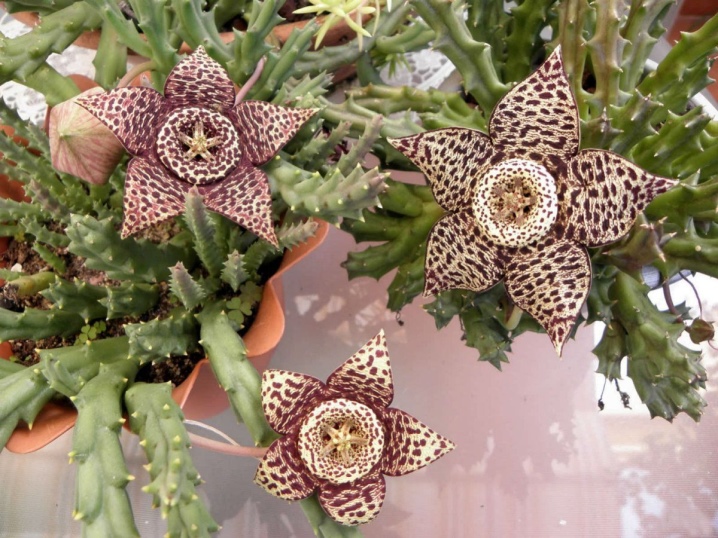
Pseudolithos
This interesting culture has recently begun to appear on windowsills in private houses and apartments. Pseudolithos is one of the most unusual and rare succulents., which in its external characteristics is more like a sea stone, sprouted by corals and algae.
Scientists have discovered no more than 10 varieties of this original plant, and they all differ in their decorative effect. But it must be borne in mind that the process of growing Pseudolithos can be difficult.
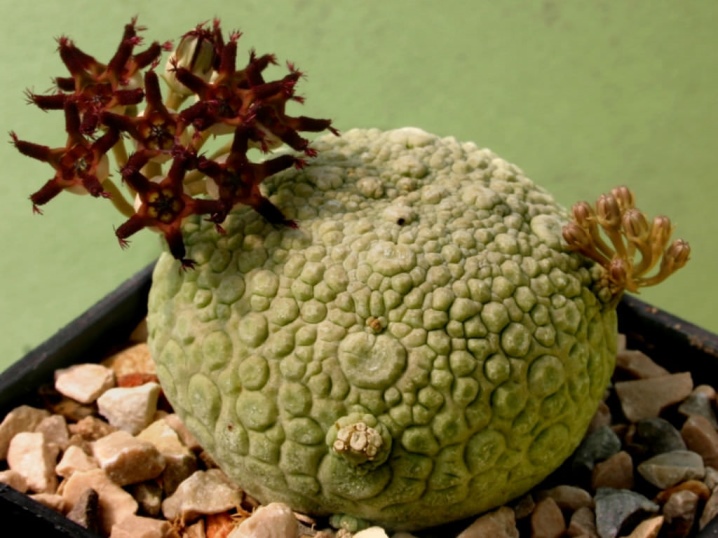
Venus flytrap
A cunning and ruthless plant that looks like an alien from another planet. The flower hides in itself small, but numerous serrated-type traps, in which you can catch some insect alive, for example, a fly or a spider. A victim caught in such a trap forces the trap to close, after which the flower can digest the prey.
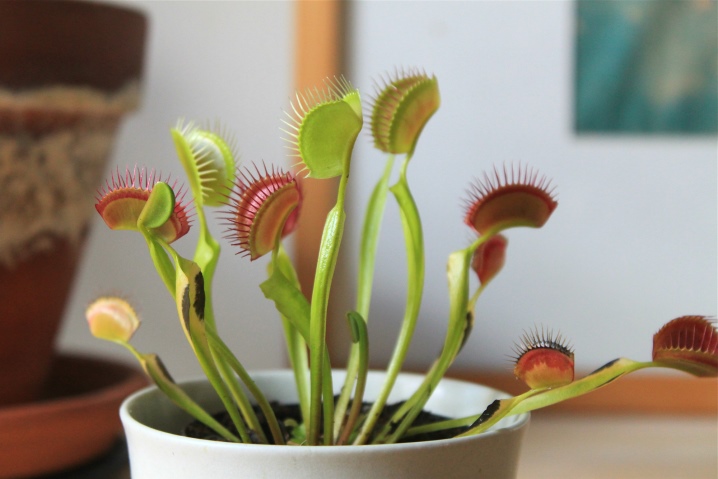
There are many more unusual and rare ornamental plants in the world, one kind of which can cause surprise and even disgust in a person. When deciding to grow such crops at home, it is important to familiarize yourself with all their features and subtleties of content., so as not to ruin the exotic pet later.
Beautiful flowering varieties for the home
If you want to decorate your home with spectacular flowering crops, you can choose from among the varieties described below, which are very popular with flower growers.
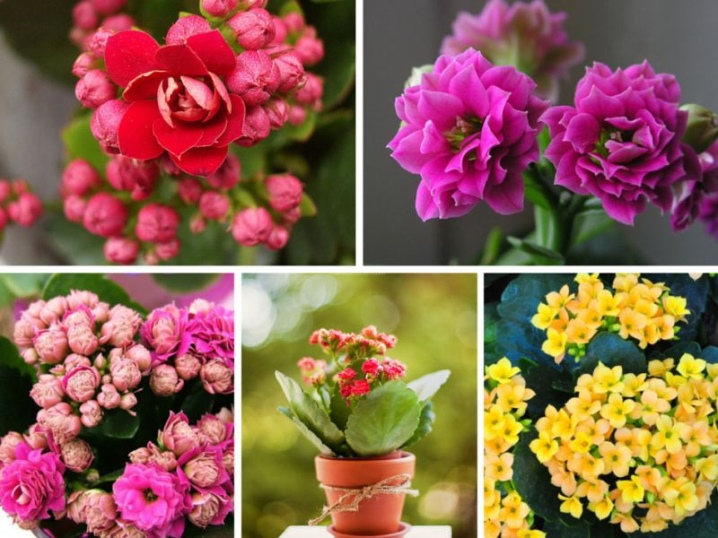
Hibiscus
This is a tropical culture that forms huge flowers, the diameter of which can be up to 18 cm. Each of the flowers can bloom for only 1 or 2 days, but the plants bloom freely from late spring to autumn, and in some cases to winter. It is only necessary to maintain the soil in an evenly moist state, to give the planting a sufficient amount of light in the room.
Hibiscus is famous for its gorgeous flowers in a wide variety of colors. They can be both light and neutral, and variegated and saturated: red, orange, yellow, pink, white and even blue.
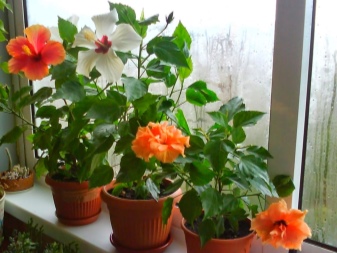
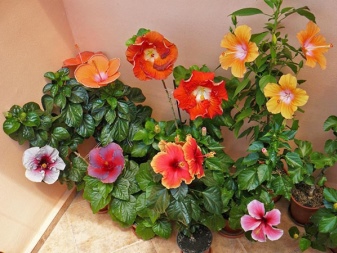
Abutilon
The name of this lovely plant comes from the shape of the foliage - it is the same as that of the maple. It is a fast growing crop that blooms almost constantly. When growing abutilone, it is important to maintain uniform soil moisture. There are times when the flowering of the culture in question begins to subside. Then you need to check the watering.
To further strengthen the branching of the plant, in the spring you can resort to pruning the stems by about 50%.
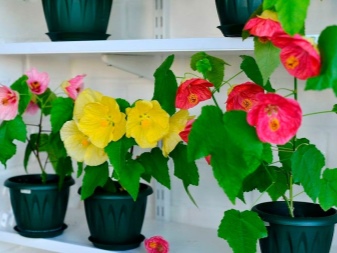

Clivia
An adorable plant that can be grown in pots. If the flower grows indoors, it can bloom in the form of clusters of 20 tubular red-orange or yellow flowers. Clivia can bloom only when all the necessary conditions of detention are created for her. The plant has deep green leaf blades that are aligned on the same plane. Such a flower looks very interesting and attractive, even if it does not bloom.
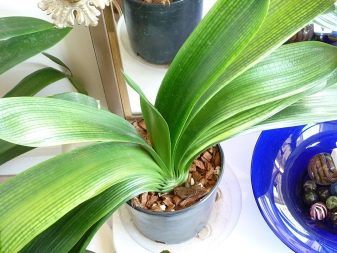
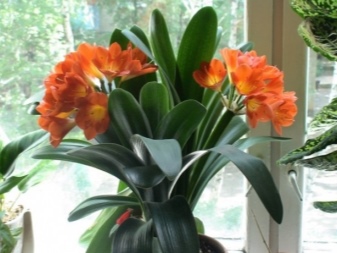
Brovallia
A cute plant that is primarily appreciated for its spectacular flowering. If you take proper care of this green pet, it will literally be strewn with chic and delicate blue-violet flowers. There are also specimens decorated with snow-white, blue or purple flowers.
It is worth noting the strikingly long bloom of the eyebrow - it can last for 16-18 months.

Spathiphyllum
An attractive plant that is unpretentious. It is easy and simple to look after him. Spathphyllum tolerates low light and low humidity levels without problems. In the summer season, this culture needs partial shade or diffused sunlight. With the onset of the winter season, on the contrary, spathphyllum needs more sun light.
The main stage of flowering of this handsome man falls precisely on the summer season. However, many of the spathphyllum varieties can bloom throughout the year. Plants have delicate glossy leaves that look aesthetically pleasing even in those periods when there are no flowers on the pet.
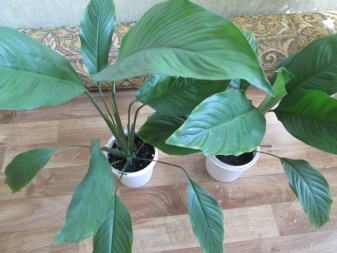
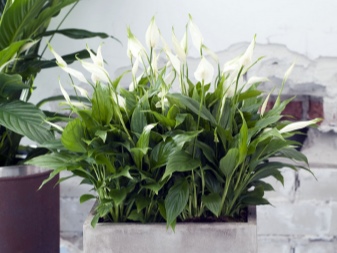
Jasmine
There is a "sea" of varieties of handsome jasmine. The multi-flowered and Arabian species look especially bright and expressive. They are easiest to grow at home. These varieties of jasmine need to provide access to sufficient moisture and light. In gratitude for the comfortable growth, jasmine will delight the grower with fragrant pink and white flowers.
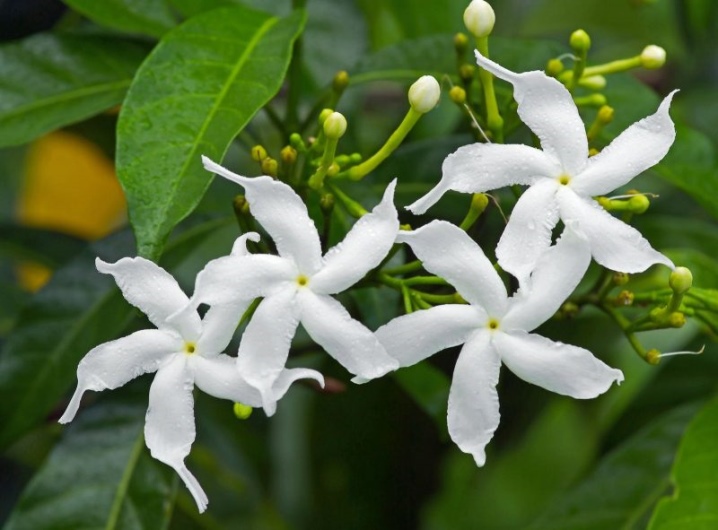
Beloperone
It blooms actively with snow-white flowers throughout the summer season. If you provide the culture with proper and proper care, it can bloom at all throughout the year. Beloperone needs good light, obligatory regular watering. When the flowering stage of the plant comes, it is important to make suitable fertilizing. When this period ends, it is required to immediately carefully cut off the tops of the shoots. Thanks to such actions, the bush will grow much more actively.
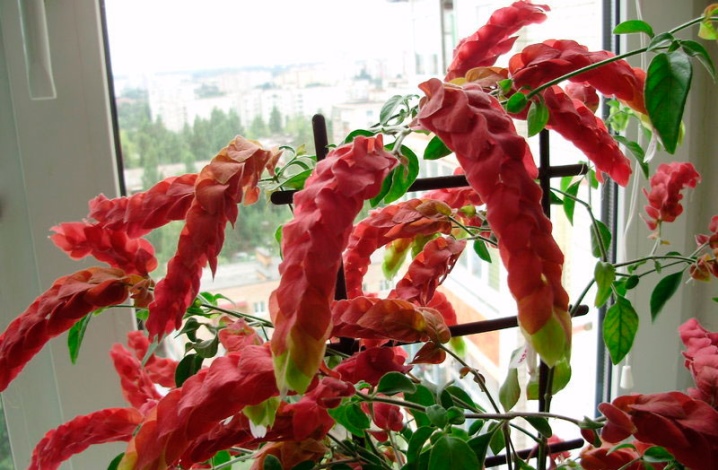
Ixora
Otherwise, this interesting and bright plant is called the flame of the forest. Ixora got this name thanks to flower clusters that have a rich yellow, red or orange color.
This is a plant that does not need complicated care. Even a novice florist can grow Ixora.

Gloxinia
Another elegant plant, distinguished by its beautiful and spectacular flowering. It has attractive flowers that resemble small bells. The color can be different. Currently, such interesting varieties of gloxinia have been bred, the flowers of which look like miniature roses.
The culture in question feels good in warmth and high humidity. It should not be watered by touching the leaf blades - because of this, characteristic specks may appear on them. Ideally, the plant should be watered with warm water from a tray. When the flowering period of this plant is over, it needs rest.
In winter, it is recommended to keep the flower pots in a cool place.
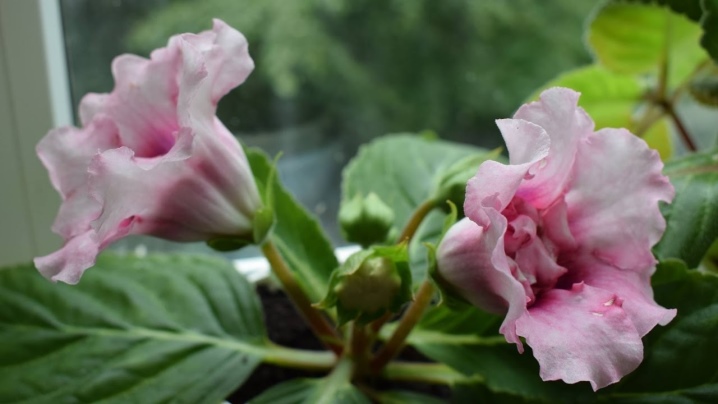
Guzmania
An unusual plant that will definitely attract a lot of attention while in the interior. Guzmania has tough, glossy and jagged foliage. It is located on the stem, forming a kind of vase. The flowers of the plant are distinguished by bright colors. They can keep their attractive appearance for 6 months.
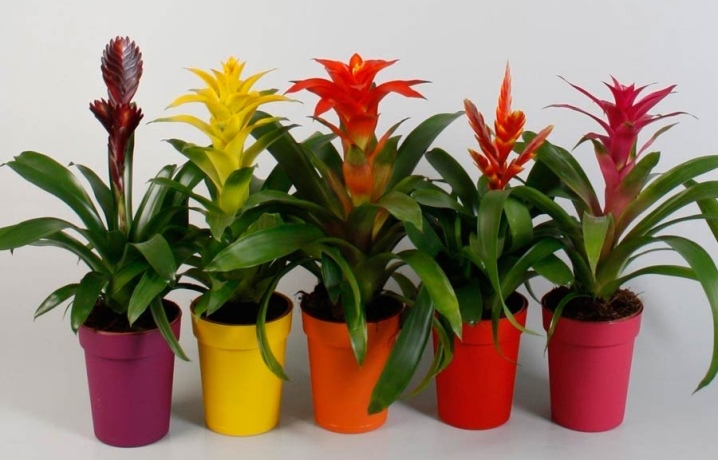
Examples in the interior
As mentioned above, beautiful indoor plants can be a chic addition to any interior design. Fortunately, there are many types and varieties of attractive crops that can transform the environment, breathing life and natural colors into it. Let's look at some good examples.
- The snow-white handsome jasmine can become a chic decoration of a rich interior, made in a classic or pretentious style. It is advisable to surround the flower with light colors of upholstery and trim, contrasting with the dark tones of wooden furniture.
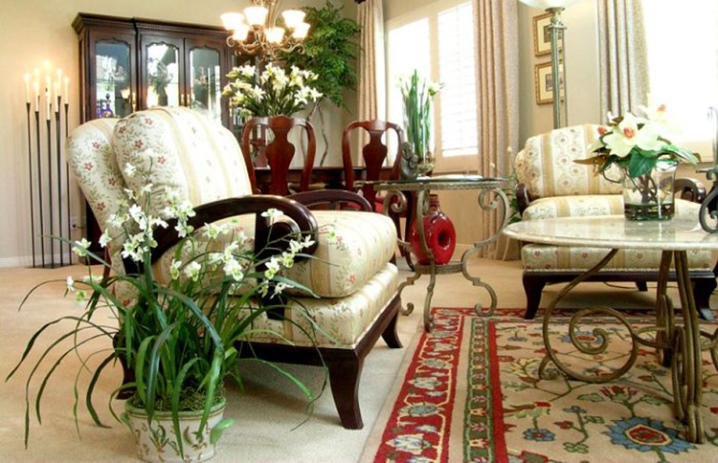
- A bouquet of variegated multi-colored guzmans can be a great addition to an interior, completely sustained in white and beige shades. You can draw more attention to these amazing colors by placing them in a tall vase in a contrasting green.
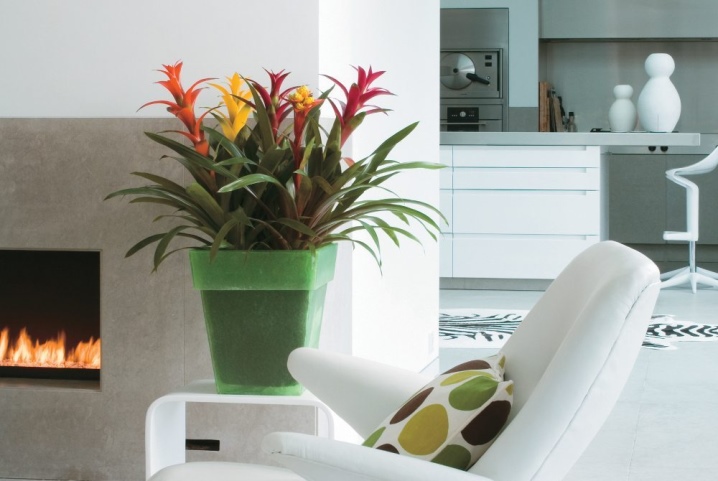
- A handsome anthurium with catchy red buds can serve as a bright accent surrounded by a minimalistic gray and white interior. To make this living decoration even brighter and more attractive, you can additionally pick up a tall glossy vase in a dense red or burgundy hue.
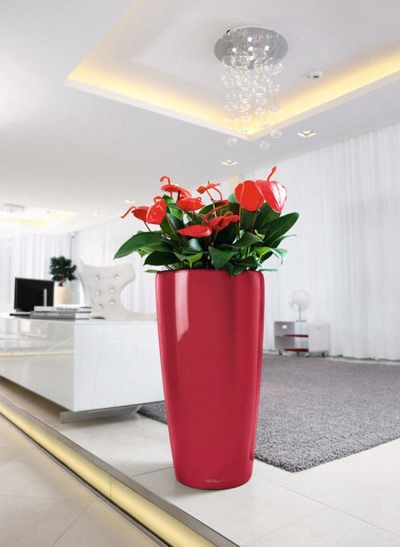
For lungs in growing indoor plants, see the next video.































The comment was sent successfully.